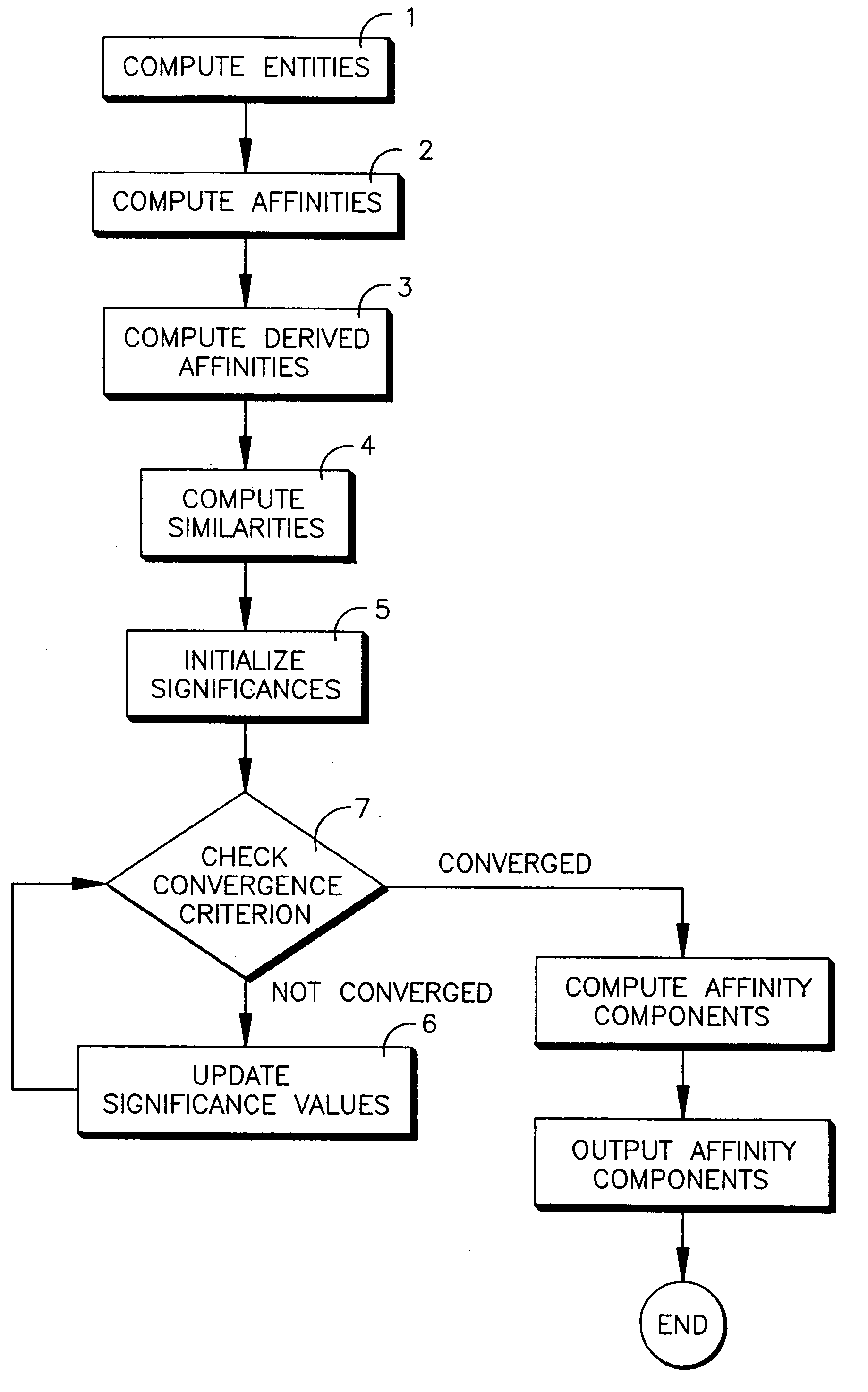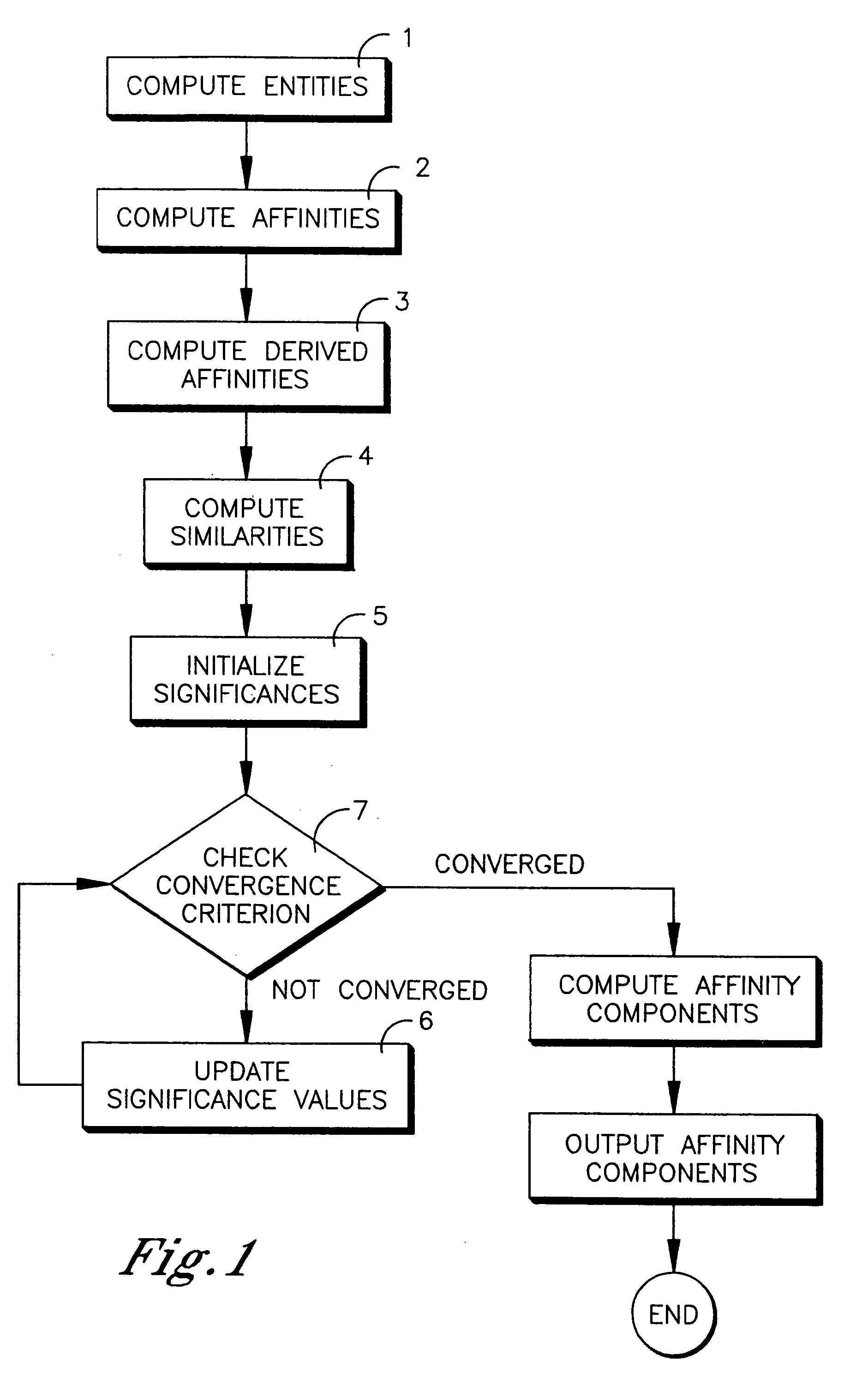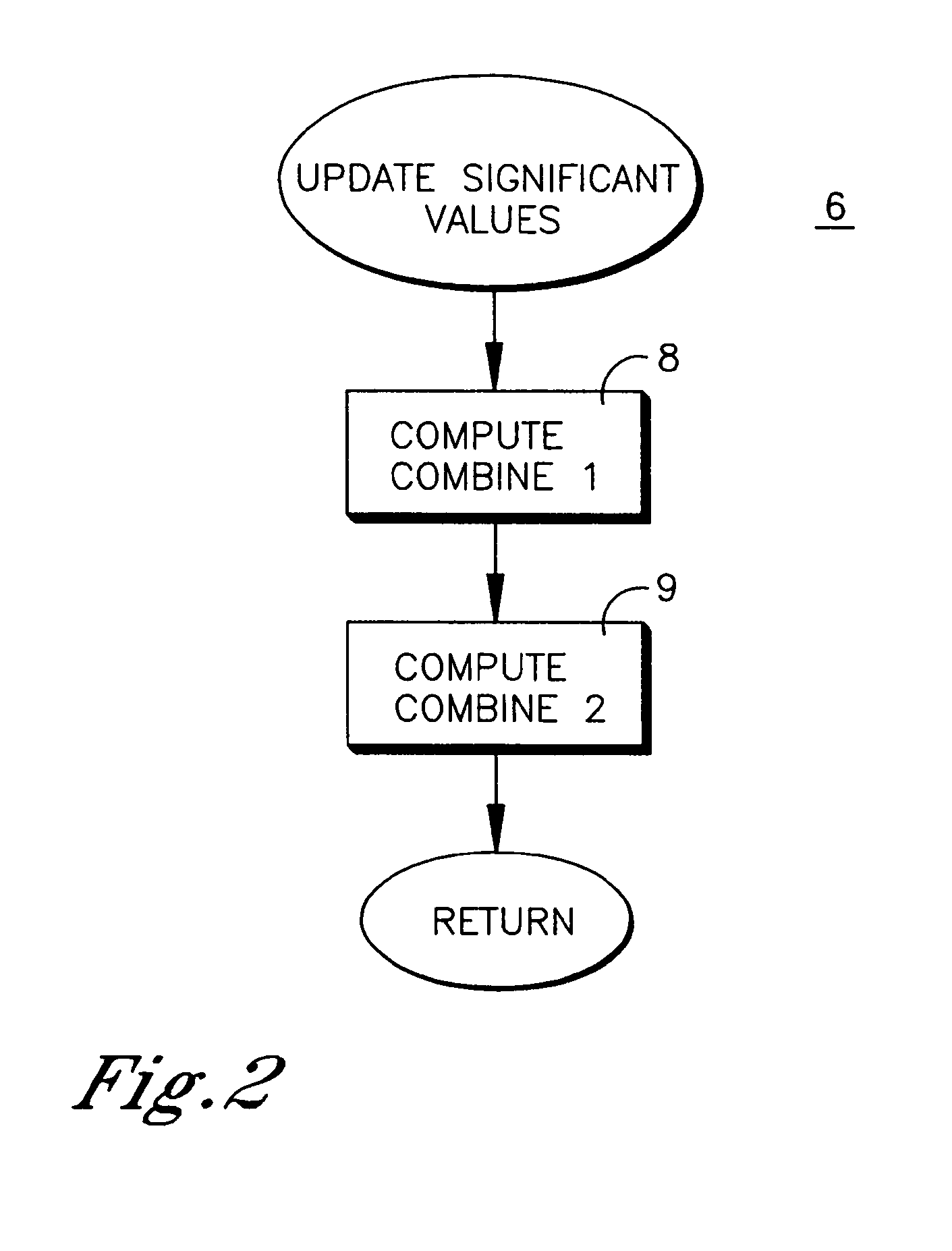Method and system for filtering of information entities
a technology of information entities and filtering methods, applied in the field of data processing, can solve problems such as large calculations, and achieve the effect of facilitating the practice of the method
- Summary
- Abstract
- Description
- Claims
- Application Information
AI Technical Summary
Benefits of technology
Problems solved by technology
Method used
Image
Examples
second embodiment
of the Invention—General Case
[0134]Next, the general case will be described, of multiple similarities between nodes, and multiple significances at each node. The implementation is substantially similar to that shown in FIG. 1, except for differences that will be discussed.
[0135]A vector of significances is associated with each node. The vectors are of the form
S(v, t)=(s(v, 1, t), . . . , s(v, k, t))
at time t, where k is the number of terms of the significance vector, is being computed. The significance values in the significance vector are initialized in step 5, as before.
[0136]Similarly, a vector of similarities
M(u,v)=(m(u,v,1), . . . a(u,v,m))
is associated with each pair of nodes (u,v), where m is the number of terms of terms of the similarity vector, is being computed. The similarity values of the similarity vectors are obtained in step 4, also as before.
[0137]Typically the number k of terms in the significance vector is equal to the number m of terms in the similarity vector. Th...
PUM
 Login to View More
Login to View More Abstract
Description
Claims
Application Information
 Login to View More
Login to View More - R&D
- Intellectual Property
- Life Sciences
- Materials
- Tech Scout
- Unparalleled Data Quality
- Higher Quality Content
- 60% Fewer Hallucinations
Browse by: Latest US Patents, China's latest patents, Technical Efficacy Thesaurus, Application Domain, Technology Topic, Popular Technical Reports.
© 2025 PatSnap. All rights reserved.Legal|Privacy policy|Modern Slavery Act Transparency Statement|Sitemap|About US| Contact US: help@patsnap.com



